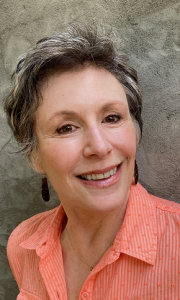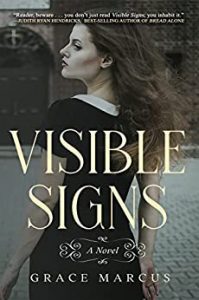‘Seeing’ Visible Signs
‘Seeing’ Visible Signs
This has happened twice.
 In my mind’s eye, I see a scene: the people, the place, an event. Nothing more. A still life. It seems to work as a starter, similar to levain, a leavening agent made from a mixture of flour and water used to bake bread. The flour and water mixture takes on the wild yeasts in the air, and ferments. So did that image take on fragments of my thoughts, memories, experiences, dreams, and then ferment.
In my mind’s eye, I see a scene: the people, the place, an event. Nothing more. A still life. It seems to work as a starter, similar to levain, a leavening agent made from a mixture of flour and water used to bake bread. The flour and water mixture takes on the wild yeasts in the air, and ferments. So did that image take on fragments of my thoughts, memories, experiences, dreams, and then ferment.
With Visible Signs, I ‘saw’ two women who I understood were close, but not related, in a rural setting and an impending birth. Those women eventually became my protagonists: a nun and her childhood friend, now a wife and mother. When Sister Jude, unable to reconcile her sheltered existence with the plight of the community’s poor, leaves the convent to start a food bank, she moves to a house surrounded by trees and farmland. Her friend Connie shows up, pregnant with two young children in tow, seeking shelter from a crumbling marriage. As for an impending birth, as it turned out there were several both literal and figurative.
Of course I knew none of that when I began to write their story. I had no idea how to write a novel. I read books, took workshops, tried to map it out but none of these methods worked for me. Somehow they took me out of the story, reducing it to plot points.
So, I wrote scenes, I wrote dialog. Not in a linear fashion. The nun seeing a migrant boy combing through a dumpster when she went into town. The monastery hosting weekend retreats for lay women. The wife praying her talented husband will make the cut for a part in a play. The children dressing up as nuns. Gardens, somehow, plants and flowers and vegetable (you’ll forgive the pun) cropped up. A ski trip. A baptism. A death. Rituals sacred and profane. Incidents from the women’s pasts. Collisions with other characters. I likened these scenes to beads but I had no idea how to string them together or in what order. I put them in folders labeled with each character’s name if applicable, or in a folder labeled scenes.
Having been the beneficiary of the cultural revolution of the tumultuous ’60s, I knew women who had felt trapped in the life choices they had made before the political, social and institutional upheaval ushered in by the Vietnam War, Vatican II, the civil rights-, women’s rights – and anti-poverty movements. As soon as it became apparent that I was writing their story, I had the string.
The second time I ‘saw’ an image, it became another book. A woman, her grown son, a camera, an argument. Again, no plot, just characters, place and event. Back into the levain for fermenting. Then more characters, scenes, dialog, folders. An argument at a backyard barbeque, a trip to Crete, a fascination with pinhole photography, a ramshackle inn, runners, mother and son close together then coming apart. These developed into the story of a woman who never encountered a problem she couldn’t endure, outthink or out-run. Until her grown children discover her reckless past. Then she pays a terrible price for an affair 25 years after it was over, after she made amends and reconstructed her family. And her favorite child, a son, (now grown) faces a choice similar to the one she had to make 25 years ago. The string!
Now, having written two novels and at work on a third, I finally understand how I write. A scene insinuates itself into my awareness, so vivid and precise that it becomes the genesis of a novel. There it marinates, aided by solitude and nature, and I begin. Scenes, dialog, characters accumulate. Again I put them in folders by name if applicable or in a catch-all for scenes. My current book’s folder for scenes contains documents titled: with St. Bernard in the rain, Gabe got the worst of her, House party, crossing the Delaware, osso buco, thrift shop debacle, etc. Only after I have all or most of the ‘beads’ can I string them together to see what’s missing and what doesn’t fit.
We all have our ways into story. I know some writers who ‘hear’ their characters, some who have a marvelous ability to imagine ‘what ifs,’ or get the through-line, or are haunted by an idea. No matter the process, we all get there eventually. For me, the greatest lesson has been to learn how I do it. I think it’s true that we write stories we want to read. I read to be moved and I write to touch others. My process is sometimes arduous and often slow but when I hit the right notes-oh my!
So, I no longer try to make a plan or outline a plot. I just keep on collecting the beads until I can string them together.
—
Grace Marcus holds a Master in Theatre Arts from Montclair University. Visible Signs is her debut novel. An early version of the book was a semifinalist in the William Faulkner-William Wisdom Creative Writing Competition. She has been a waitress, social worker, newspaper editor, and radio and cable TV show producer to name some of the byways on her way to becoming a writer. Her work has been published in Philadelphia Stories, The Bucks County Writer Magazine, Adanna Literary Journal, TheWritersEye, Women on Writing, Me First Magazine, and Embark Literary Journal. A Brooklyn native, she has lived on both coasts, and presently calls North Carolina home where she is working on a new novel.
Social media links
https://www.gracemarcus.com
https://www.facebook.com/#!/grace.marcus1
https://twitter.com/Gracenotes17
https://www.instagram.com/grace_notes_22
https://www.goodreads.com/author/show/20277196.Grace_Marcus
https://www.pinterest.com/gracenotes5490/_saved/
VISIBLE SIGNS
 Sleepless nights and restless days erode Sister Jude’s peace of mind, capsizing the equilibrium of the life she chose, the life she’d loved. Although she roams the acres of monastery grounds in silent prayer so frequently she had to tighten the cincture around her waist, she cannot find her bearings.
Sleepless nights and restless days erode Sister Jude’s peace of mind, capsizing the equilibrium of the life she chose, the life she’d loved. Although she roams the acres of monastery grounds in silent prayer so frequently she had to tighten the cincture around her waist, she cannot find her bearings.
If God is calling her, Jude wishes He would speak louder. Or send her a sign. He had shown her the way once, so clearly, she’d forsaken her widowed father and the boy who loved her to answer His call.
But that was before the battles—from the Vatican to Vietnam—for Women’s Rights, Civil Rights, and the War on Poverty. Now she can no longer reconcile her sheltered existence with the desperate faces outside the monastery walls. Vowing to start a food bank, she leaves the convent, only to become ensnared in her best friend’s crumbling marriage.
When Connie, pregnant with two children in tow, shows up at her door, Jude offers them refuge. But Jude soon learns how little she understands of the vagaries of the heart. And that her fierce faith and determination may not be enough to save Connie from her husband, the children from danger or herself from a fall from grace.
Praise for Visible Signs
“Anyone who has stood on the cusp of change will relate to these characters, who comb through their pasts and examine the shards at their feet for clues to the true calling that will carry them forward. A historical novel that speaks to the daunting freedoms of our times.” —Kathryn Craft, award-winning author of The Far End of Happy
“Reader, beware . . . you don’t just read Visible Signs; you inhabit it. In luminous prose, Marcus tells the story of two women in the turbulent 1970s—Jude, a Catholic nun, and her childhood friend Connie, now a wife and mother—both questioning their vows and chafing against the frustrations of their very different paths. In a small town in upstate New York they find themselves on parallel quests, rethinking cherished assumptions about family and friendship, love and faith . . . and making choices that will change their lives forever.” —Judith Ryan Hendricks, best-selling author of Bread Alone
“For Sister Jude, a life of service to others takes on new meaning as she works to feed the hungry in her community and help a friend fleeing a dissolving marriage. Author Grace Marcus gives us these people with verve and compassion, from the nuns to the immigrants, from a traditional Italian family to the sensitive farmer who might just shift Sister Jude’s plans. This story of women re-examining their lives in the 1970s resonates strongly with our own times.” —Valerie Nieman, author of In the Lonely Backwater
“I was gripped by Jude’s character and dilemma and by the vivid depiction of life in the monastery. Visible Signs is a wonderful novel, one that will captivate its readers!” —Ursula DeYoung, Editor, Embark: A Literary Journal for Novelists
“In Visible Signs you’ll meet and fall in love with Rita and Connie, old friends making new starts, both painful and promising. Like the Mary garden planted in the story, what is planted comes to fruition, feeding the deer as well as these two strong characters who know the price to be paid for claiming themselves. I loved it from start to finish.” —Jo-Ann Mapson, Author of Owen’s Daughter and Solomon’s Oak
Available for preorder from TouchPoint Press & Amazon
https://touchpointpress.ecwid.com/Visible-Signs-a-novel-p450716326
https://www.amazon.com/Visible-Signs-Grace-Marcus-ebook/dp/B09V5S4ZQV
Category: How To and Tips























